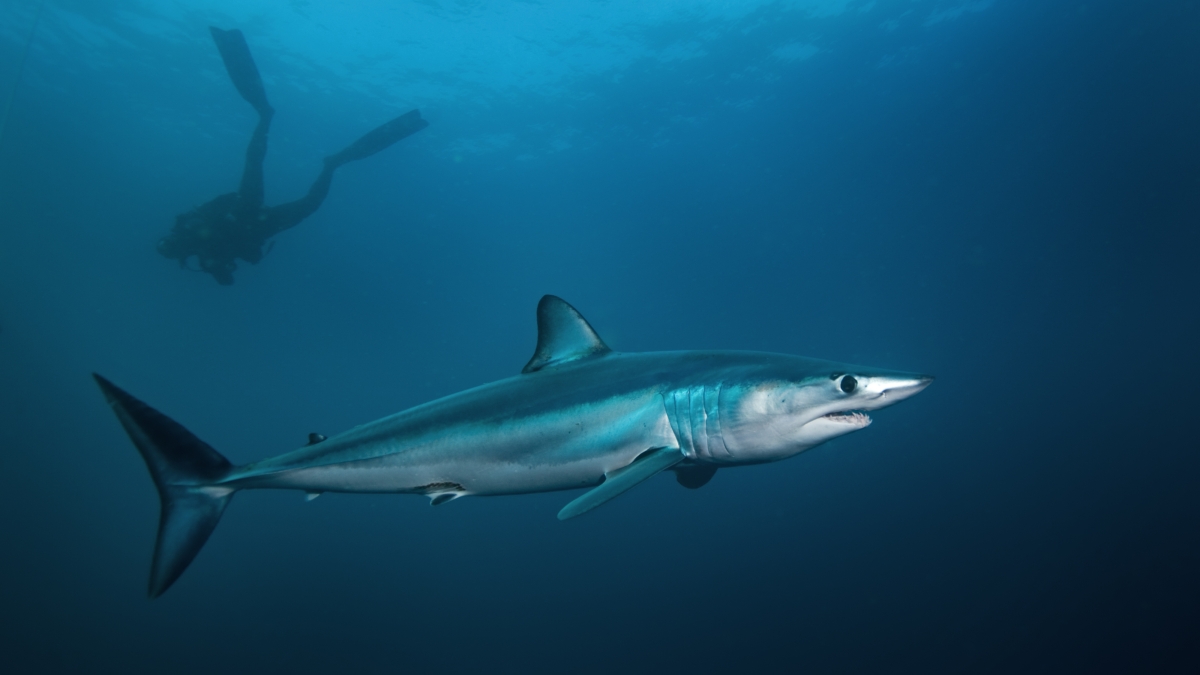New ASU study identifies research priorities for threatened sharks

The Atlantic shortfin mako shark was identified by experts as the threatened shark species of particular concern.
Sharks are some of the most threatened animals on Earth, and while many scientists want to dedicate their research to helping to save sharks, many report that they don’t know how to do this effectively.
A new paper in the journal Conservation Science and Practice, led by Arizona State University Faculty Research Associate David Shiffman, has identified 35 research priorities that scientists can use to shape their research on threatened shark species in the United States.
“Lists of research priorities help scientists, especially early career scientists, to choose a research project that can have a real impact,” Shiffman said. “Instead of having to figure out the complexities of policymaking and management on your own to learn what information managers need, lists of research priorities give scientists a one-stop shop to easily find everything. These scientists know that a question they’re hoping to answer with their work is a research priority because it’s already been identified as one.”
To generate this list of research priorities, the team from ASU's New College of Interdisciplinary Arts and Sciences surveyed 86 experts from the fields of scientific research, environmental advocacy, natural resource and fisheries management, endangered species conservation and industry from throughout the United States. These experts were asked to reflect on what information we don’t currently know about threatened sharks that we need to know, and to propose research priorities as well as policy priorities.
Similar priorities were combined, resulting in 205 submissions being rephrased and combined into 35 research priorities. These include a wide range of data needs required to conserve and manage threatened species of sharks, from tracking population trends to the influence of climate change on shark migration patterns, from studying what fishing gear types result in allowing sharks caught unintentionally to survive, to studies on more effective solutions for public outreach.
Identified policy priorities focused on strengthening fisheries management rules, protecting more habitats and protecting them more effectively, and more effectively pressuring other nations to improve their fisheries management practices.
Additionally, these experts were asked to suggest threatened shark species of particular concern. Atlantic shortfin mako sharks, the subject of many policy discussions in international fisheries management circles over the past few years, topped this list, followed by sawfish and dusky sharks. Concerns about the ecological impacts of recovering great white shark populations were also mentioned, along with concerns surrounding the sandbar shark research fishery, a unique industry-science collaboration that allows fishers to kill an otherwise protected species if they collect data for scientists.
Other key results:
- 71% of surveyed experts reported that they support sustainable fisheries management for sharks rather than attempting to ban all fishing for sharks and trade in shark products.
- 76% of surveyed experts reported that the United States manages our shark fisheries slightly or much better than the rest of the world.
- 79% of surveyed experts reported that the United States protects our threatened species of sharks better than the rest of the world.
“By compiling the first-ever list of research priorities for threatened sharks in United States waters, we hope to help scientists focus their research on questions that will help protect these animals,” Shiffman said. “With increasingly dire shark conservation news, these animals can use all the help they can get.”
“The reason this kind of work is so important, and so necessary, is that are many, many scientists motivated to make a difference right at this moment in history, but they don’t necessarily know where to apply their efforts to maximize their impact,” said Lara Ferry, senior author and ASU President's Professor. “Sometimes there is a large gap between academic scientists and those on the front lines seeing, and attempting to manage, the impacts of various factors on species and populations. Well-intended research either doesn’t make its way to those ecological ‘first responders,’ or it just isn’t the data they need to help them make the decisions they need to make.”
ASU coauthors include Ferry and Associate Professor of Environmental Chemistry and Aquatic Conservation Beth Polidoro.
More Science and technology

Will this antibiotic work? ASU scientists develop rapid bacterial tests
Bacteria multiply at an astonishing rate, sometimes doubling in number in under four minutes. Imagine a doctor faced with a…

ASU researcher part of team discovering ways to fight drug-resistant bacteria
A new study published in the Science Advances journal featuring Arizona State University researchers has found…

ASU student researchers get early, hands-on experience in engineering research
Using computer science to aid endangered species reintroduction, enhance software engineering education and improve semiconductor…